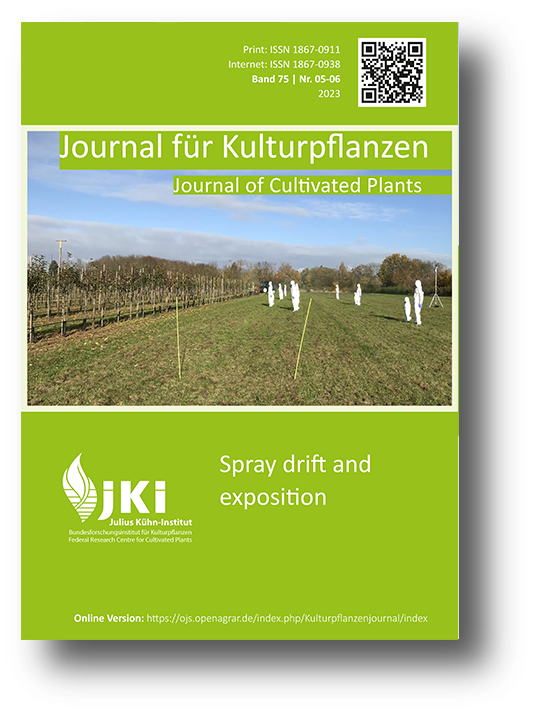Spray drift from application of plant protection products with drones in vineyards
DOI:
https://doi.org/10.5073/JfK.2023.05-06.04Keywords:
Unmanned Aerial Spraying System, drone, spray drift, vineyard, basic drift valuesAbstract
Field experiments according to ISO 22866 were conducted to determine the spray drift from Unmanned Aerial Spraying Systems (UASS) applying plant protection products (PPP) in vineyards in order to collect data that can be used for drift risk assessment by authorities.
Different octocopters, nozzles (standard and air induction), application parameters (height, speed) and flight patterns (longitudinal and lateral flight lines) were used. The drift sediment at distances up to 20 m was compared to the German basic drift values for crewed helicopters and ground based air blast sprayers.
In comparison to PPP applications with crewed helicopters, the spray drift risk is substantially lower when using UASSs. For air induction nozzles, the 90th percentile values of drift sediment are even lower than the basic drift values for ground equipment.
This is why, similar to crewed helicopters, UASSs should be equipped with drift reducing atomisers, such as air induction nozzles. Providing this, the existing basic drift values for vineyards would apply also for drift risk assessment for UASS applications.
Published
Issue
Section
License
Copyright (c) 2023 Andreas Herbst, Michael Glaser, Kay-Uwe Bartsch

This work is licensed under a Creative Commons Attribution 4.0 International License.
The content of the journal is licensed under the Creative Commons Attribution 4.0 License. Any user is free to share and adapt (remix, transform, build upon) the content as long as the original publication is attributed (authors, title, year, journal, issue, pages).
The copyright of the published work remains with the authors. The authors grant the Journal of Cultivated Plants, the Julius Kühn-Institut and the OpenAgrar repository the non-exclusive right to distribute and exploit the work.







